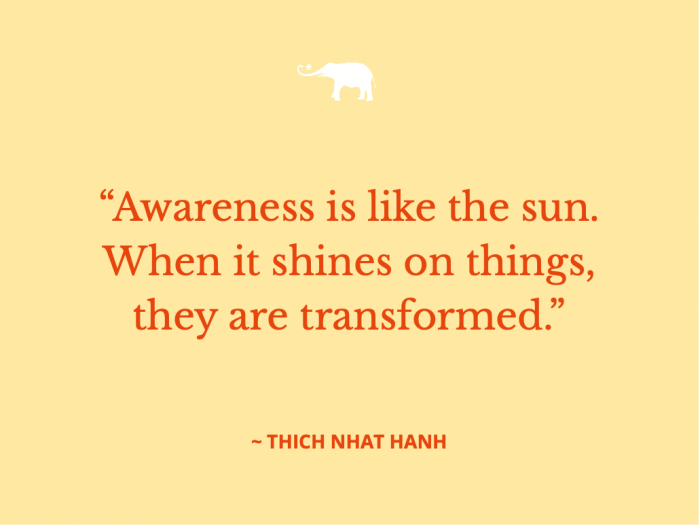View this post on Instagram
Meditative walking is a great way to convert what we do every day into action, with therapeutic, soothing, and encouraging effects, which will make your life more conscious, bright, and interesting.
Let’s say that you’re utterly exhausted from the workday, or a family weekend with toddlers has sucked you dry, or you’ve pins and needles because of an unsuccessful business meeting? One of the remedies for all these desperate states of distress and increased anxiety can be meditation. Not the static one, though, but the dynamic one.
We don’t need to only meditate on the rug, staring into the wall.
The fact is that Buddhists believe the human body has only four main positions: it can either sit, stand, walk, or lie. All other movements are just the interim stages or mere versions of the previously mentioned main positions. The widely known static lotus position in meditating is just a drop in the ocean, as the main purpose of meditation is to train awareness at all body levels, thoughts, and emotions. Moreover, we are supposed to maintain the same level of awareness throughout the day.
To achieve this fundamental aim, other types of meditation are involved, along with classic sedentary ones—they are; standing meditation, lying meditation, and walking meditation. The idea is clear as day: once we learn to keep awareness in each of the main four positions of the body, then the maintenance of awareness throughout the day will be a piece of cake.
The common skeptical attitude toward walking meditation is partly because people find it difficult to focus their attention on the observation of thoughts while strolling.
On the other hand, sedentary meditation is usually associated with inevitable moments of discomfort. The aching pain in limbs, the itching spin, or the fly that chose your forehead as a place to relax are all distractions of a meditating person.
It would be naive to believe that the gurus of meditational techniques are magically free from such problems. Yes, their body is prepared better, but they certainly can’t avoid a fly or exhausted muscles. So what does the master do? As peculiar as it may sound, he eliminates the cause of discomfort and continues to meditate. Moreover, if we are dealing with a real master, the process of eliminating the cause of discomfort smoothly becomes part of meditation. What’s keeping the rookie from doing so? Doubts, excessive importance, anger, fussiness, and other emotional storms, which, fortunately, are short-lived. That’s why the best plan of action should provide you with the progressive shift from the static meditation to the walking one.
The best location would be the mountains. No wonder it is in the mountains where one can find plenty of retreat centers and temples. On the one hand, mountains require a person’s super attentiveness to the walk, not allowing them to plunge into the inner dialogue, and on the other, are striking with their greatness. Oddly enough, meditation practice can make our mind similar to the mountains—resistant to winds, thunderstorms, and heavy rains.
During the walking meditation, it is essential to acquire the skill of dissolving your mind in action, and even for a little while, become a walk itself.
In brief, when regular, this ancient practice centers the mind, making it resistant to both external informational and internal chemical scourges. With enough willpower and practice, we can do the same even whilst in the epicenter of a giant megalopolis.
The perks.
If we dig deeper, we will trace it back to the sacred source for Hindu monks, the sutras. According to the traditional Indian texts, Buddha stressed five major benefits one can enjoy from walking meditation.
1. Marching long distances develops endurance.
The first advantage of walking meditation is that long-distance hiking contributes enormously to endurance. It was especially important at the time of the Buddha when most people traveled on foot. Buddha often traveled, having moved from place to place, sometimes passing up to sixteen kilometers in one day. Therefore, he advised walking meditation as a method for the development of physical form and endurance with long hikes.
2. Diligence is useful for overcoming drowsiness.
During deep static meditation, the omnipresent tranquility causes practitioners to soon start dozing, or even snoring. Time flies quickly, and without awareness and vigilance, meditation can turn into dullness because practitioners are quickly beset with laziness and apathy. The development of walking meditation can counteract this trend.
3. Walking meditation promotes good health.
We all know that walking is considered to be a great kind of physical activity, and walking meditation is both a physical and mental exercise. To get such benefits, though, we must bring awareness to the process, instead of just going out and about while building castles in the air.
4. Walking meditation has a positive effect on digestion.
This is especially important for monks who eat once a day. Physiologically, after receiving food, the blood outflows from the brain and sticks to the stomach. Therefore, drowsiness is felt. Forest monks emphasize that after receiving food, a few hours of walking meditation should be followed since walking contributes to digesting.
5. Concentration achieved while walking is long-lasting.
When we walk, we get a lot of sensory information. We cast our eyes everywhere we go. Once we’ve trained our minds to exclude everything else while walking, then it will be easier to stay undistracted in other situations.
The technique.
While walking, we focus on the movements produced, become more conscious, and try to listen to our actions—this helps us clear our heads from ambient noise and feel “here and now.”
This particular meditation technique makes you go beyond unconscious movements performed on autopilot. After all, walking is an active process in which a large number of muscles are involved. Oddly enough, we don’t even think about it.
During the meditating walk, we concentrate on the process itself, moving the focus from the outside world to the inner.
Before starting the meditation, pay attention to the position of your body: straighten your back and relax your shoulders and arms. Take some long deep breaths and during the exhalation, feel how your body is softly relaxed.
Movements are conditionally divided into three phases: lifting legs, horizontal move, land touch. Try to coordinate the steps with breathing: inhale whilst raising your legs, then exhale as you lower them. You should keep your gaze fairly straight, not down. Every movement must be slow and calm.
As you get used to these actions, start paying attention to the bodily sensations: how the foot is being removed from the floor and then how it touches it again. Try to feel each segment of your actions thoroughly.
Here are six tips that will help make your meditation while walking more interesting and conscious:
>> Time. This type of meditation does not require much time. Allow five to ten minutes per day for the practice. You will learn to meditate during your daily walk sooner than it may seem, but at the initial stage, it is better to check in with the time.
>> Place. Choose a pleasant, quiet, secluded place with a smooth surface, where there will be no bumps and pits so that you do not have to make stops often—a park, stadium, beach, street—take your pick!
>> Outfit. Opt for shoes on a thin sole, or if possible, go barefoot.
>> Conscious. Don’t latch onto the final destination—be here and now. Concentrate on the actions produced by you and not on the way itself. Do not lose your focus and decisively get rid of all the second thoughts popping into your head.
>> Breath. Pay attention to your breathing—it should be slow and calm.
>> New habits. Gradually try to apply meditation techniques while walking in everyday life.
It is not necessary to change anything in your stride or speed; you can simply refocus your attention inward toward the feeling you get in your legs when walking.
Try to feel that you are now going, when the realizations that “the body moves” come, catch your breath, let all the pondering thoughts disappear, and at least for a moment stay in the soothing state of introspection.
~


 Share on bsky
Share on bsky





Read 0 comments and reply